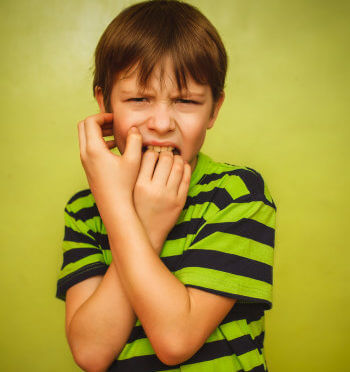.


A crossbite is when a tooth or group of teeth is or are closer to the cheek or tongue than its or their corresponding tooth or teeth above or beneath it or them. It’s basically a misalignment of your teeth, which can be really problematic, especially in the long term. All parts of the body must work together in congress to keep you healthy. When one piece falls out of sync, the whole house of cards can easily fall apart. For that reason, the question is not whether or not you should have a children’s dentist Midland Park company fix your child’s crossbite. The real question is what is the most effective way to go about doing it.
There are two principal methods of correcting a crossbite. There is the fixed appliance, and there is the removal appliance. Both methods have their advantages and disadvantages, both of which become greater when referring to children. A recent study shows an in depth comparison between the two methods. In this study, researchers studied 64 random patients with crossbites. They compared the status of each patient’s crossbite at the start and finish of treatment for both methods. They also investigated how often patients dropped out of treatment prematurely, the quality of the experience and how long it took to complete. You can use this information to determine what would be best for your child.
Regarding the quality of the two treatments, nearly every case ended with patients successfully correcting their crossbites for both types of treatment. Of the 64 patients in the study, only one for one for the removable appliance did not end with success.
The removable appliance was made of an acrylic material with a plate that patients could place on the roof or floor of their mouths. As you may have guessed, patients had the liberty of taking it out as they pleased. This was preferable for some patients because it didn’t inhibit eating as much as the fixed appliance. That being said, they also found that the duration of treatment for patients who used the removable appliance tended to last slightly longer than the fixed appliance. But only by an average of a month and a half.
Concerning pain and discomfort, the fixed appliance was slightly more burdensome at the start, but within a month of treatment most patients grew accustomed. Beyond the initial month, the level of pain for both treatment were not clinically significant. There were, however, a couple small differences. The removable appliance tended to influence patients’ speaking because they had less cumulative time for their bodies to adjust. On the other hand, as we’d mentioned earlier, the fixed appliance inhibited eating more.
In closing, there is no simple answer for whether one treatment is better than the other. It really depends more on what you think is best for your child. Bear in mind that it is possible that these results would be different had there been more than 64 participants. The real question is whether you think your child would like to sacrifice a slightly great amount of discomfort in exchange for completing his or her treatment in a slightly shorter amount of time.
We hope you found this information helpful. To learn more about our children’s dentist Midland Park services, give Pediatric Dental Associates in Ridgewood a call at (201) 652-7020.